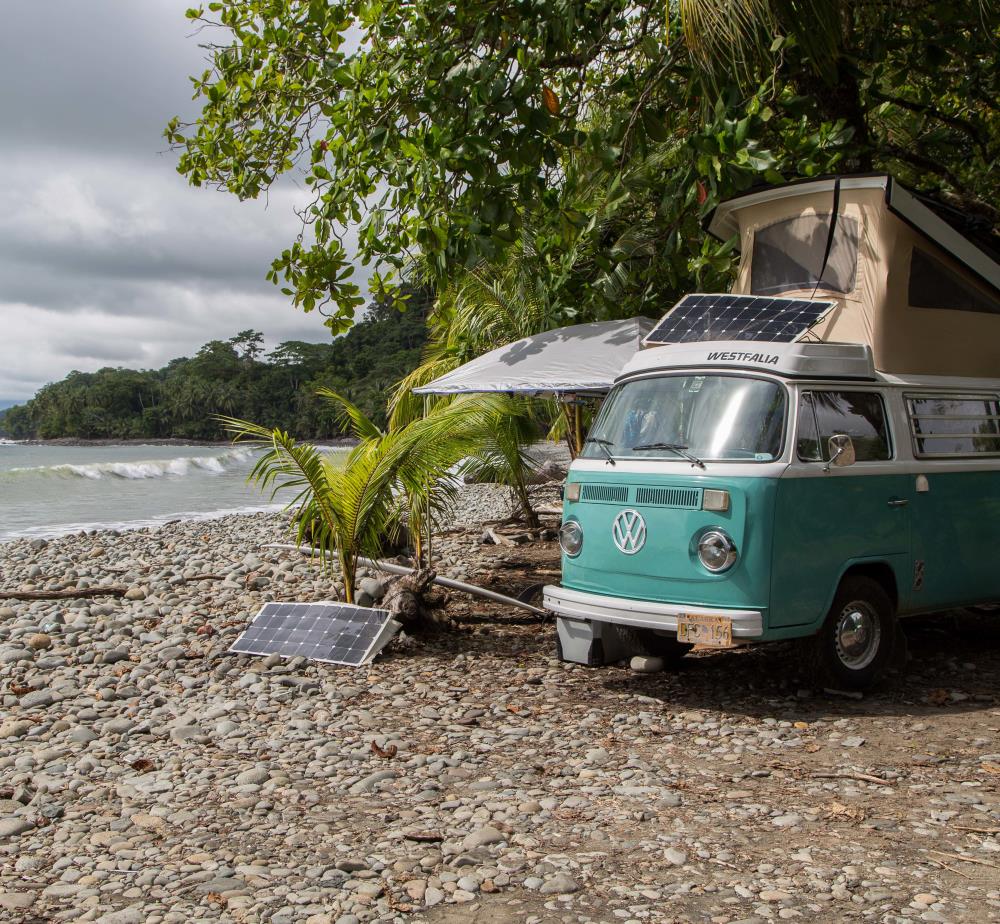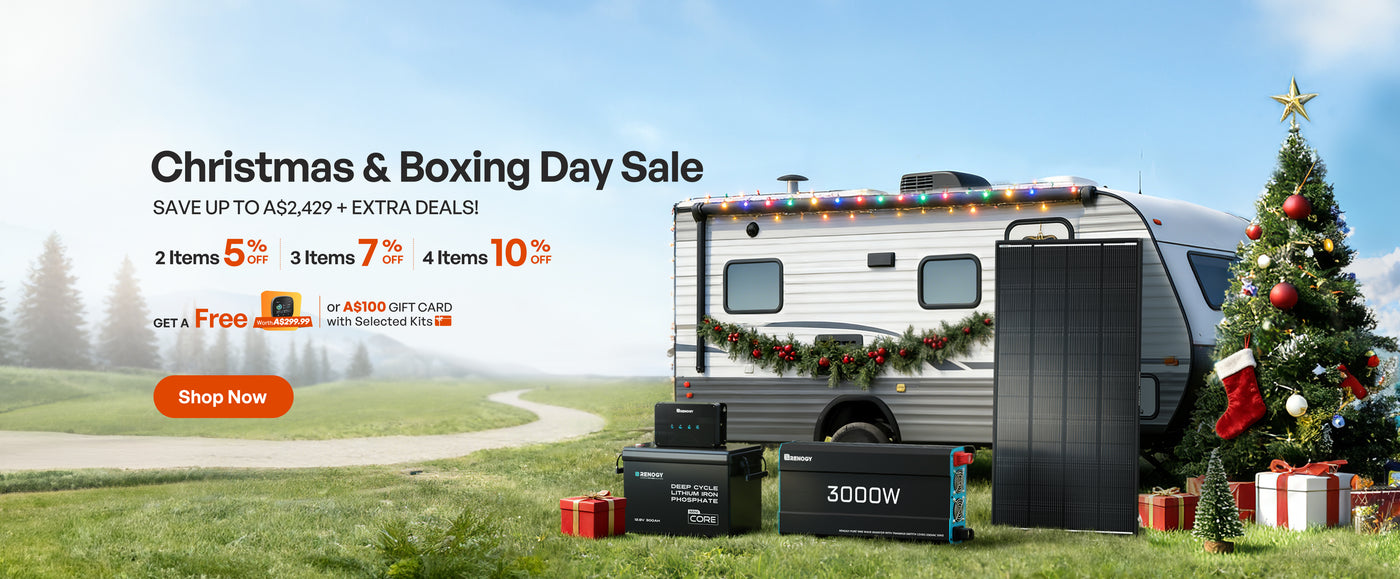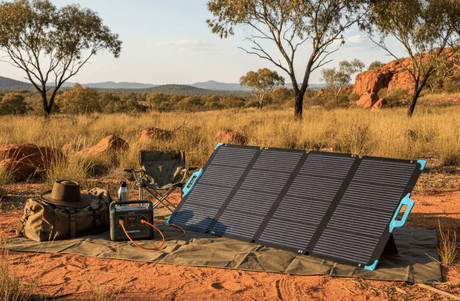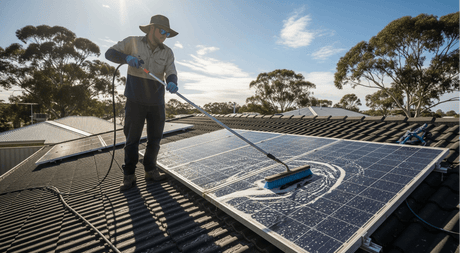Are they as strong as rigid solar panels?
Gone are the days of heavy, unwieldy, and difficult to install solar panels. Thanks to advancing solar panel technology, flexible solar panels make it easier to mount more solar panels on more surfaces. Unlike traditional rigid solar panels, flexible panels are thinner and more lightweight. They also allow you to keep the lines of your RV, boat, or van clean, and also make it possible to mount on non-flat surfaces.

How do solar panels work?
Photovoltaic solar panels are made up of many solar cells made of silicon. When sunlight hits the panels, they create an electric current. Panels have both a positive and a negative layer, which creates an electric field.
Solar panels collect current, which then feeds into a charge controller, which controls how much current goes to a battery. Charge controllers prevent batteries from being overcharged. They also have the ability to shut down a system if the energy stored dips below 50%. Batteries store and produce DC power. In order to use AC appliances, such as microwaves, laptops, and phone chargers, an inverter is used to change the power from DC into AC power.
What are flexible and rigid panels?
Rigid solar panels are the industry standard and what you typically envision when thinking of solar panels. Flexible solar panels on the other hand, are a lightweight alternative that can flex up to 248 degrees, making them a great option for mounting on surfaces that are not flat. Renogy flexible panels are only .08 inches thick, making them easier to be out of sight if for example, you like to do some stealth camping.
What’s the difference between monocrystalline and polycrystalline panels?
Solar panels are typically available in polycrystalline or monocrystalline options. Polycrystalline panels, which are light blue in color, are less efficient, but they are also cheaper than monocrystalline. The process used to make polycrystalline silicon is simpler and therefore costs less to produce. Monocrystalline solar panels, which are dark blue in color, have the highest efficiency rates and are more space-efficient than polycrystalline panels. However, they are also more expensive. You’ll notice that all of Renogy’s flexible panels are monocrystalline, meaning you’ll have the most space efficient option available to you.
What are the pros and cons of flexible and rigid panels?
There are various pros and cons to flexible and rigid solar panels.
Flexible solar panels:
- Weigh less than the rigid solar panels and can be installed directly on the roof of your RV, in contrast to rigid solar panels which stick up above your roof somewhat and can be trickier to place between other components on your roof. Flexible solar panels typically weigh a quarter of the weight of traditional rigid panels.
- Do not last as long as rigid panels. Due to the nature of plastic, flexible solar panels degrade more quickly than glass and aluminum. That said, Renogy offers a 5-year material and workmanship warranty on flexible panes,
- Are comparable in price to rigid solar panels
Rigid solar panels:
- Are typically more durable
- Can be mounted to tilt, which increases their energy production efficiency.
- Are comparable in price to flexible solar panels
Are flexible solar panels tough enough to withstand the elements?
Renogy’s flexible solar panels are tough and rigorously tested. They’re designed to withstand extreme winds of up to 2,400 Pa and snow loads up to 5,400 Pa. That being said, we do not recommend walking on them as it may result in internal damage to the solar panels.
How do I know what size system I need?
We recommend using the Renogy solar panel calculator to help determine your specific needs. To determine what size system will best fit your needs, make a list of all the appliances and devices you plan on running. The main appliances to take into consideration when addressing energy needs may include a TV, lighting, water pump, laptop, fans, microwave, and refrigerator. The solar sizing calculator allows you to input information about your lifestyle to help you decide on your solar panel requirements. You’ll just need to know what total watts your electronics will consume, how long you plan on running devices, your charge controller efficiency, and average sun hours per day. The solar panel calculator will then be able to tell you the minimum and recommended system size, as well as the recommended battery output.
How do I install flexible solar panels?
For Renogy’s solar panel kits, we recommend consulting with an installer, electrician, or our technical support team for guidance and support. All our off-grid kits are DIY ready with a user-friendly installation process and our installation guides are available online. Remember, you won't want to mount the panels where you need to walk.
Traditionally, panels need a small air gap to dissipate any heat that is generated from the panels. Some installers may recommend putting a spacer behind the panel with double-sided tape or velcro tape to give your panels some breathing room. However, the current generation of Renogy’s flexible panels have a much higher heat tolerance. This means you can directly mount them to your roof, as well as include a spacer if that’s preferred. Efficiency may be increased if you include a spacer.
How do I care for solar panels?
Solar panels require minimal maintenance. We’d recommend brushing off any leaves that may collect on the surface of the panels and washing off the panels at least once a year to remove any dirt or other residue that may have collected. All of these practices will ensure that your panels are operating at maximum efficiency.
Conclusion
Flexible solar panels are ideal for people mounting on non-flat surfaces, want to make their panels unnoticeable, and don’t want to worry about handling heavy, unwieldy panels. Combine that with their efficiency and durability, and they’re a great option for many individuals.








![What Is a DC to DC Battery Charger [Comprehensive Guide]](http://au.renogy.com/cdn/shop/articles/IMG_3829_bd86de74-31d6-49fd-b9d5-265bb723091d.jpg?v=1757582605&width=460)


